Nestled high in the Himalayas, Tibet is a mystical land that promises adventure and spiritual awakening. For trekkers, the allure of its pristine landscapes, ancient monasteries, and rich cultural heritage is irresistible. If you’re considering a Tibet trekking tour, here’s a comprehensive guide to help you embark on this unforgettable journey.

Understanding Tibet’s Unique Appeal
Tibet, often referred to as the “Roof of the World,” is renowned for its dramatic landscapes, including snow-capped mountains, high-altitude deserts, and deep valleys. Trekking in Tibet offers the opportunity to explore sacred sites, interact with Tibetan nomads, and witness traditional Buddhist ceremonies. Key trekking routes like the Mount Kailash Kora and the Ganden to Samye trek provide a mix of natural beauty and spiritual significance.
Best Time to Trek in Tibet: Detailed Insights
Choosing the right time to embark on a trekking adventure in Tibet is crucial for maximizing your experience and ensuring your safety. The climate in Tibet varies significantly due to its high altitude and unique geographical features. Here’s an in-depth look at the best times to plan your trek:
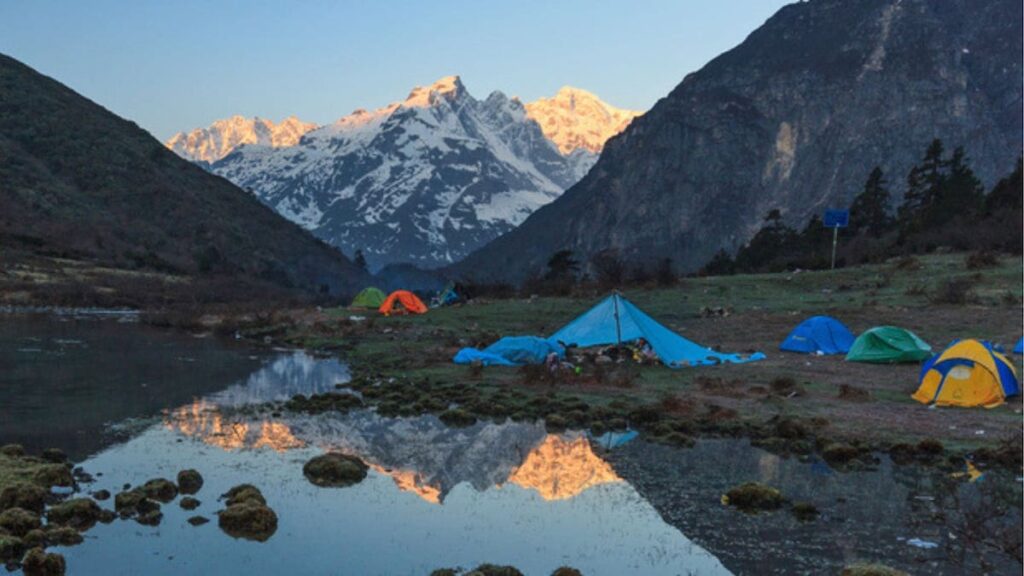

Spring (April to June)
Spring is one of the best times to visit Tibet. As the snow starts to melt, the landscapes come alive with lush greenery and vibrant wildflowers. The temperatures are relatively mild, making trekking comfortable.
Advantages:
• Mild Weather: Temperatures range from 10°C to 20°C (50°F to 68°F), providing pleasant conditions for trekking.
• Clear Skies: Springtime offers clear skies, allowing for breathtaking views of the Himalayas and other scenic landscapes.
• Festivals: This season coincides with several Tibetan festivals, such as the Saga Dawa Festival, providing a unique cultural experience.
Considerations:
• Crowds: Spring is a popular time for tourists, so some trekking routes and popular sites might be more crowded.
Summer (July to August)
Summer in Tibet is characterized by warmer temperatures and occasional rain showers. While this is the monsoon season, Tibet receives much less rainfall compared to other regions due to its high altitude and geographical location.
Advantages:
• Warm Temperatures: Daytime temperatures can reach up to 25°C (77°F), while nights remain cooler but not freezing.
• Lush Landscapes: The occasional rain showers result in lush, green valleys and blooming wildflowers, enhancing the natural beauty.
Considerations:
• Rainfall: Although Tibet’s monsoon is relatively mild, certain areas can experience heavy rains, leading to muddy and slippery trails. It’s essential to be prepared for wet weather and possible delays.
Autumn (September to October)
Autumn is arguably the best season for trekking in Tibet. The weather is stable, with clear skies and crisp air, providing excellent conditions for outdoor activities.
Advantages:
• Optimal Weather: Temperatures are similar to spring, ranging from 10°C to 20°C (50°F to 68°F), with minimal rainfall.
• Spectacular Scenery: The autumn foliage adds a golden hue to the landscapes, and the visibility of the mountains is at its best.
• Festivals: Autumn also hosts significant festivals like the Harvest Festival, offering a glimpse into local traditions and culture.
Considerations:
• Cooler Nights: As the season progresses, nights can become quite cold, so it’s important to have appropriate gear for colder temperatures.
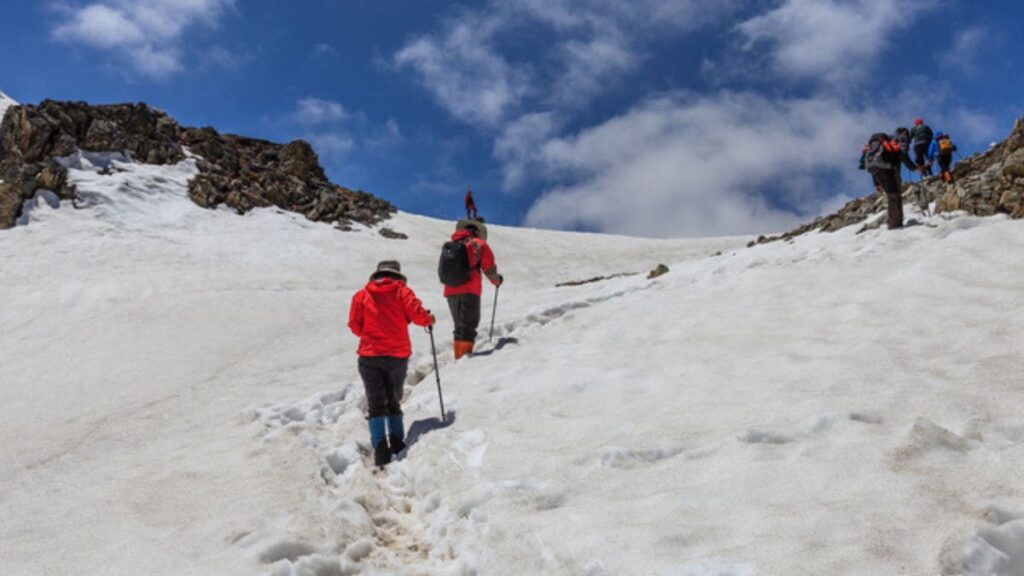

Winter (November to March)
Winter is the least popular time for trekking in Tibet due to the harsh weather conditions. The temperatures can drop significantly, especially at higher altitudes, and many trekking routes might be inaccessible due to snow.
Advantages:
• Fewer Tourists: For those who can brave the cold, winter offers a unique opportunity to experience Tibet without the crowds.
• Festivals: The Tibetan New Year (Losar) falls during winter, providing a vibrant cultural experience.
Considerations:
• Harsh Weather: Temperatures can plummet to well below freezing, especially at night, making trekking challenging.
• Limited Accessibility: Many passes and routes may be closed due to snow, and accommodation options can be limited.
The best time to trek in Tibet largely depends on your personal preferences and tolerance for weather conditions. Spring and autumn are the most favorable seasons, offering mild temperatures, clear skies, and vibrant landscapes. Summer is also a good time, provided you’re prepared for occasional rain. Winter, while less popular, offers a unique, quieter experience for those willing to face the cold.
Proper planning and preparation can ensure a successful and enjoyable trekking experience, regardless of the season. Always check weather forecasts, consult with your tour operator, and equip yourself with the right gear for the conditions you’ll encounter.
Choosing the Right Trekking Route in Tibet: In-Depth Guide
Tibet is a trekker’s paradise, offering a range of routes that cater to various interests and fitness levels. Each trail boasts its own unique blend of natural beauty, cultural richness, and spiritual significance. Here’s a detailed look at some of the most popular trekking routes in Tibet to help you choose the one that best suits your adventure aspirations.
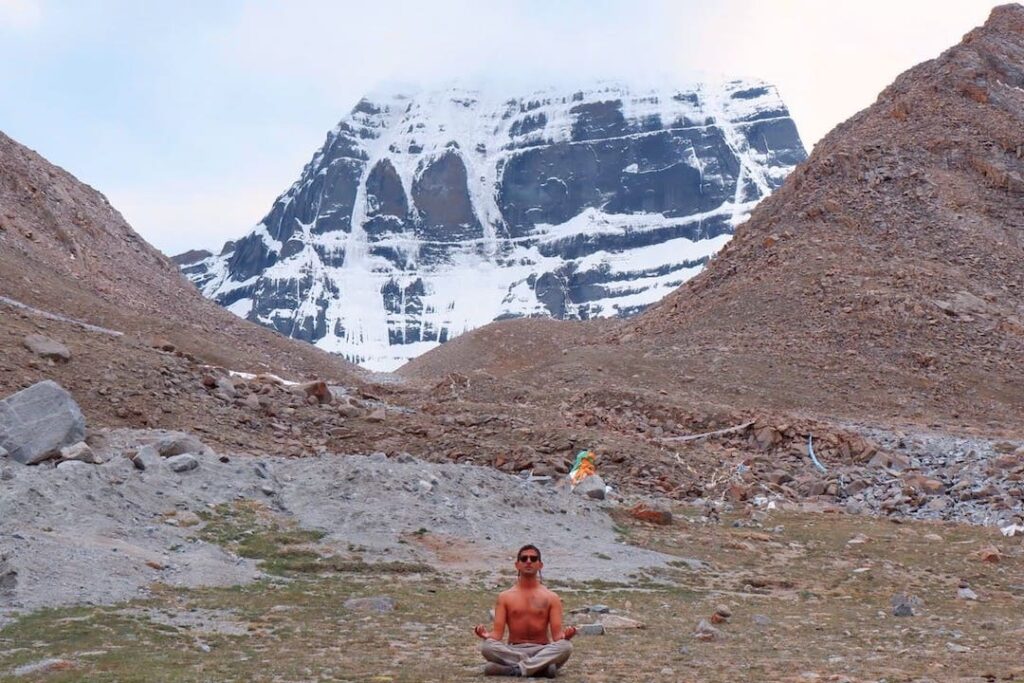

1. Mount Kailash Kora
Mount Kailash, considered one of the most sacred mountains in the world, is a major pilgrimage site for Hindus, Buddhists, Jains, and Bon practitioners. The trek around Mount Kailash, known as the Kailash Kora, is a profound spiritual journey as well as a challenging physical endeavor.
Key Highlights:
• Spiritual Significance: Pilgrims believe that completing the 52 km (32 miles) circuit erases the sins of a lifetime.
• Diverse Scenery: The trek offers views of the towering peak of Mount Kailash, serene lakes, and high-altitude desert landscapes.
• Cultural Encounters: Interact with pilgrims from various religious backgrounds and witness traditional rituals and practices.
Difficulty Level: Moderate to high. The trek reaches altitudes above 5,600 meters (18,400 feet), making acclimatization crucial.
Best Time to Trek: Late April to September.
2. Ganden to Samye Trek
This classic trek connects two of Tibet’s most significant monasteries: Ganden Monastery and Samye Monastery. The route traverses a variety of landscapes, from lush valleys and alpine meadows to high mountain passes.
Key Highlights:
• Cultural Richness: Explore ancient monasteries, meet Tibetan monks, and learn about the region’s religious heritage.
• Scenic Beauty: Pass through remote villages, crystal-clear lakes, and high-altitude passes offering panoramic views.
• Diverse Terrain: Experience a mix of terrain, including forested valleys, rocky paths, and open plains.
Difficulty Level: Moderate. The trek covers approximately 80 km (50 miles) over 4 to 5 days, with altitudes reaching up to 5,250 meters (17,220 feet).
Best Time to Trek: May to October.
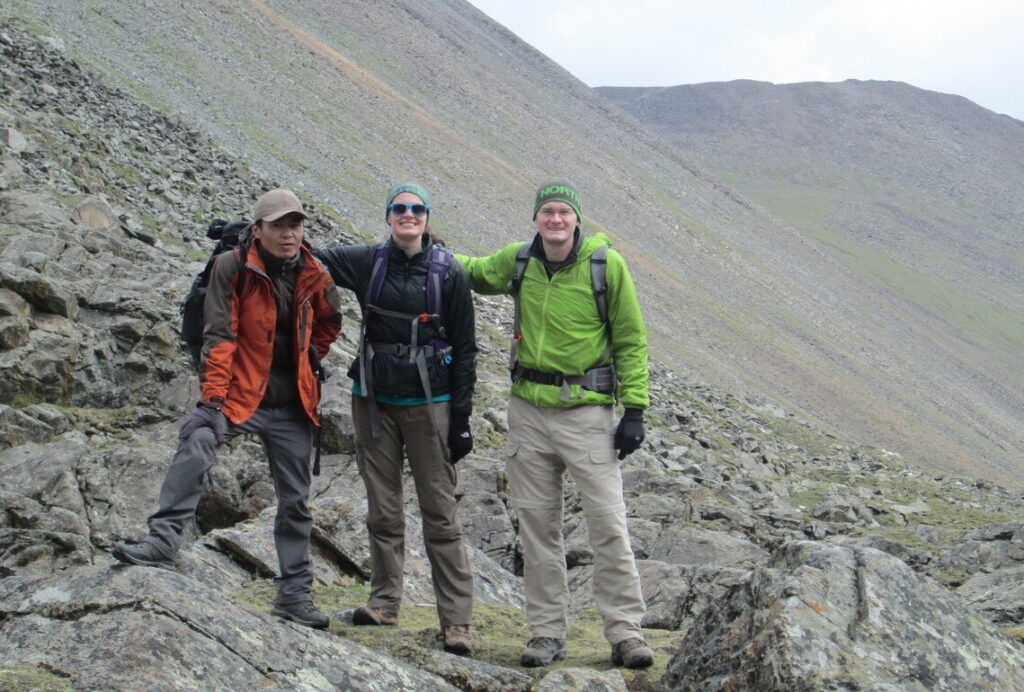

3. Everest Base Camp Trek (North Side)
The Everest Base Camp trek from the Tibetan side provides a unique perspective of the world’s highest peak. This less-crowded route offers a sense of solitude and stunning views of Everest and the surrounding Himalayan giants.
Key Highlights:
• Breathtaking Views: Enjoy unparalleled views of Everest, Cho Oyu, and other towering peaks.
• Cultural Insights: Visit the historic Rongbuk Monastery, the highest monastery in the world.
• Adventure: Experience the thrill of trekking to the base camp of the highest mountain on Earth.
Difficulty Level: Moderate to high. The trek involves significant altitude gain, reaching up to 5,200 meters (17,060 feet) at Everest Base Camp.
Best Time to Trek: Late April to early June, and September to October.
4. Lhasa to Everest Base Camp Trek
This extended trek takes you from the cultural heart of Tibet, Lhasa, to the iconic Everest Base Camp. Along the way, you’ll traverse high passes, visit ancient monasteries, and experience the rich Tibetan culture.
Key Highlights:
• Cultural Journey: Start with the historic and cultural sites of Lhasa, including the Potala Palace and Jokhang Temple.
• Scenic Diversity: Traverse diverse landscapes, including high-altitude passes, valleys, and remote villages.
• Mount Everest: The ultimate destination is the north face of Mount Everest, providing spectacular views.
Difficulty Level: High. This trek is longer and involves several high-altitude passes, requiring good physical fitness and acclimatization.
Best Time to Trek: April to early June, and September to October.
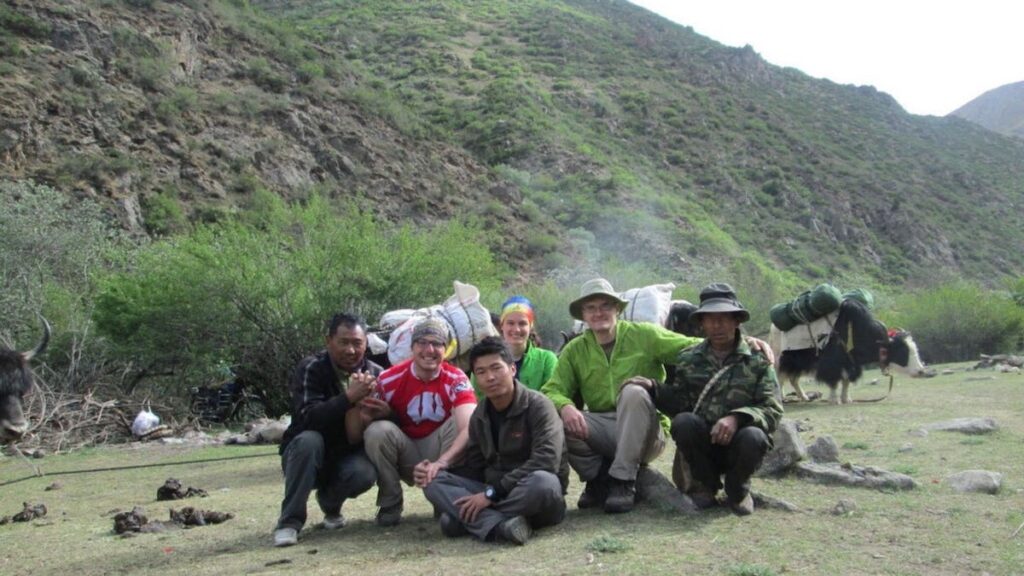

5. Shalu to Nartang Trek
A lesser-known trek, the Shalu to Nartang route is perfect for those looking to explore Tibet’s hidden gems. This trek connects two ancient monasteries, offering a quieter, more intimate experience of Tibetan culture and landscapes.
Key Highlights:
• Historic Monasteries: Visit the Shalu and Nartang Monasteries, both significant centers of Tibetan Buddhism.
• Rural Tibet: Walk through quaint villages, meet local farmers, and experience traditional Tibetan rural life.
• Varied Landscapes: Enjoy the diversity of the terrain, from fertile valleys to rugged hills.
Difficulty Level: Moderate. The trek is relatively short, about 40 km (25 miles), and can be completed in 2 to 3 days.
Best Time to Trek: May to October.
Choosing the right trekking route in Tibet depends on your interests, fitness level, and the kind of experience you’re seeking. Whether you’re drawn to the spiritual aura of Mount Kailash, the cultural richness of the Ganden to Samye trek, or the majestic views of Everest, Tibet offers an unparalleled trekking adventure. Plan your trip carefully, considering the best times to trek and the necessary preparations to ensure a safe and rewarding journey.
Acclimatization and Health Considerations
Altitude sickness is a significant concern in Tibet, as most trekking routes are above 3,500 meters (11,500 feet). It’s crucial to acclimatize properly to avoid altitude sickness. Spend a few days in Lhasa or another high-altitude city before starting your trek. Drink plenty of water, avoid alcohol, and take it easy during the first few days of your trek.
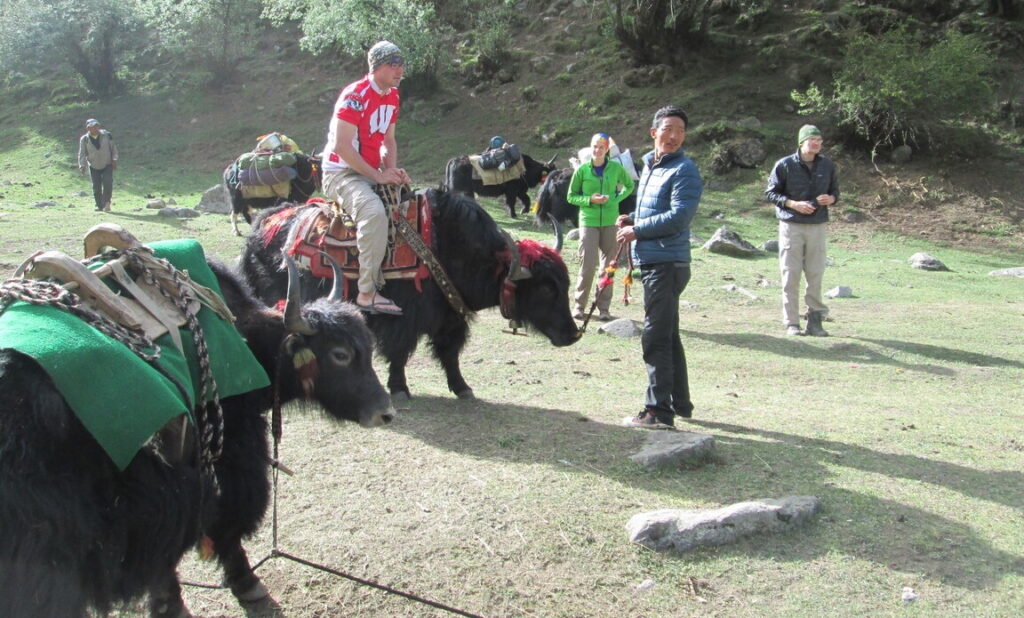

Packing Essentials
Packing the right gear is vital for a successful trekking tour in Tibet. Here’s a checklist of essentials:
• Clothing: Layered clothing, including thermal wear, a fleece jacket, a waterproof jacket, and sturdy trekking boots.
• Gear: A good quality backpack, sleeping bag, trekking poles, and a first-aid kit.
• Miscellaneous: Sunscreen, sunglasses, a hat, gloves, and a reusable water bottle.
Booking Your Tibet Trekking Tour: A Detailed Guide
Booking a trekking tour in Tibet involves several key steps to ensure a smooth and enjoyable adventure. From selecting the right tour operator to understanding the logistics, here’s a comprehensive guide to help you navigate the process:
1. Research Tour Operators
Selecting a reputable tour operator is crucial for a successful trekking experience in Tibet. Here are some tips on finding the right one:
Key Considerations:
• Experience and Expertise: Look for operators with extensive experience in organizing treks in Tibet. They should have knowledgeable guides familiar with the region’s trails, culture, and weather conditions.
• Customer Reviews: Read reviews and testimonials from previous clients. Reliable sources include travel forums, review websites like TripAdvisor, and social media platforms.
• Certifications and Accreditations: Ensure the operator is licensed and accredited by relevant tourism authorities. Membership in professional associations like the Adventure Travel Trade Association (ATTA) can also be a good sign.
• Ethical Practices: Choose operators that adhere to ethical and sustainable tourism practices, such as supporting local communities and minimizing environmental impact.
2. Determine Your Trek Preferences
Before booking, consider your preferences and requirements for the trek:
Key Factors:
• Trek Duration: Decide how many days you can allocate for the trek. Popular treks can range from a few days to several weeks.
• Difficulty Level: Assess your physical fitness and experience to choose a trek that matches your capabilities. Some treks are suitable for beginners, while others require advanced trekking skills.
• Group Size: Consider whether you prefer a small group for a more personalized experience or a larger group for social interaction.
• Inclusions and Exclusions: Review what the tour package includes, such as permits, accommodations, meals, transportation, and guide services. Be aware of any additional costs.
3. Inquire About Permits and Visas
Traveling to Tibet requires several permits, and your tour operator should assist in obtaining them:
Necessary Permits:
• Tibet Travel Permit: Required for all foreign travelers entering Tibet. This permit is issued by the Tibet Tourism Bureau and typically takes about 15-20 days to process.
• Aliens’ Travel Permit: Required for travel outside Lhasa, such as to Shigatse, Mount Kailash, and Everest Base Camp. This permit is usually arranged by your tour operator upon arrival in Lhasa.
• Military Permit: Needed for travel to restricted areas, such as Mount Kailash. Your tour operator will handle the application process.
• Chinese Visa: You must obtain a Chinese visa before applying for the Tibet Travel Permit. Ensure your passport is valid for at least six months beyond your planned stay.
4. Confirm Logistics and Itinerary
Discuss the detailed itinerary and logistics with your tour operator:
Key Details:
• Trek Itinerary: Ensure you have a clear understanding of the day-to-day itinerary, including trekking distances, altitude gains, and rest days.
• Accommodation: Confirm the type of accommodation provided, whether it’s hotels, guesthouses, or camping. Check for comfort and hygiene standards.
• Transportation: Verify the transportation arrangements, including airport transfers, travel between trek start and end points, and any internal flights or drives.
• Meals: Ask about the meal plan and dietary options. Ensure your dietary preferences or restrictions can be accommodated.
• Emergency Plans: Understand the emergency procedures in case of altitude sickness or other health issues. Ensure the guide carries a first-aid kit and there is a clear evacuation plan.
5. Prepare Financially
Understand the costs involved and prepare accordingly:
Cost Breakdown:
• Tour Package Cost: Compare prices of different operators and what each package includes. Remember that the cheapest option may not always be the best.
• Additional Expenses: Budget for additional expenses such as tips, personal shopping, extra meals, and travel insurance.
• Payment Terms: Check the payment schedule and methods accepted. Most operators require a deposit upon booking and full payment before the trek begins.
6. Ensure Adequate Insurance
Travel insurance is essential for trekking in Tibet. Your insurance should cover:
Insurance Coverage:
• Medical Emergencies: Including treatment and evacuation costs due to altitude sickness or other injuries.
• Trip Cancellations: To protect against unforeseen cancellations or delays.
• Lost or Stolen Items: Coverage for lost luggage or personal belongings.
Ensure your policy specifically covers high-altitude trekking and review the terms and conditions carefully.
7. Pack Appropriately
Packing the right gear is vital for comfort and safety during your trek:
Packing Essentials:
• Clothing: Layered clothing suitable for varying weather conditions, including thermal wear, a down jacket, waterproof gear, and comfortable trekking boots.
• Gear: A sturdy backpack, sleeping bag, trekking poles, and a headlamp with extra batteries.
• Health and Hygiene: A first-aid kit, personal medications, hand sanitizers, and toiletries.
• Miscellaneous: Sunglasses, sunscreen, a reusable water bottle, and high-energy snacks.
Booking a trekking tour in Tibet requires careful planning and consideration. By choosing a reputable tour operator, understanding the logistics, and preparing adequately, you can ensure a safe and memorable trekking experience in one of the world’s most breathtaking regions. Whether you’re drawn to the spiritual trails of Mount Kailash or the stunning vistas of Everest Base Camp, a well-planned trek in Tibet promises to be an adventure of a lifetime.
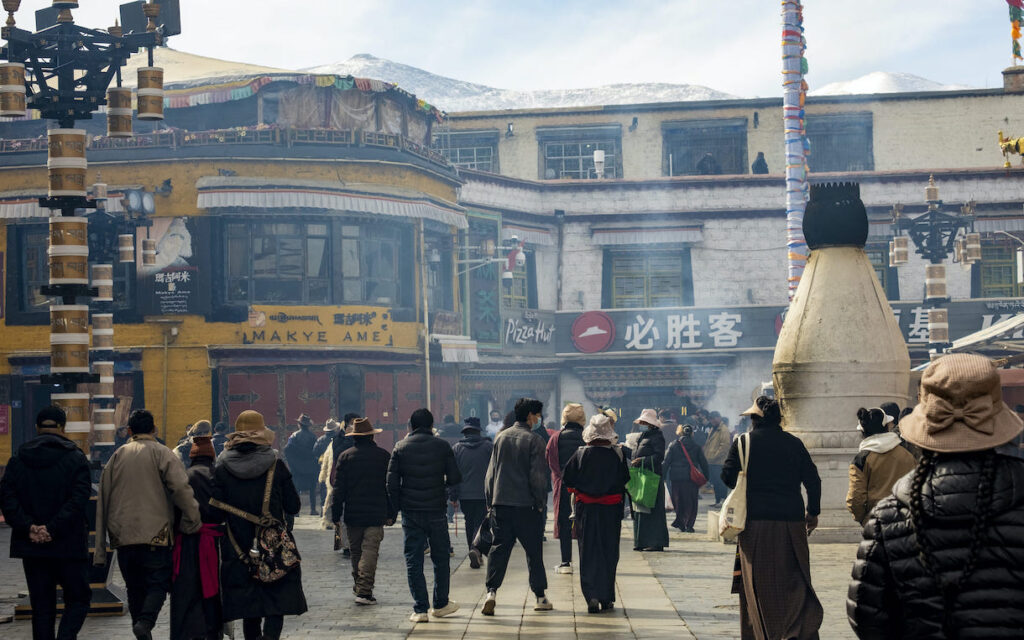

Cultural Etiquette and Respect
Tibet is not just a trekking destination but also a culturally rich and spiritually significant region. Respect local customs and traditions, seek permission before photographing people or religious sites, and be mindful of the environment by following Leave No Trace principles.
Conclusion
A trekking tour in Tibet is more than just an adventure; it’s a journey into the heart of a land steeped in spiritual and natural beauty. By preparing well and respecting the local culture, you’ll be rewarded with memories that will last a lifetime.
Whether you’re a seasoned trekker or a spiritual seeker, Tibet offers an unparalleled experience that will challenge your body, enrich your mind, and uplift your soul. Prepare for an extraordinary adventure, and let the magic of Tibet unfold before you.

[…] the adventurous, a trip to the North Base Camp of Mount Everest is a thrilling experience. The journey provides spectacular views of the world’s highest peak and […]
[…] tours provide an unparalleled opportunity. In this blog post, we will explore some of the best trekking tours in Tibet, offering insights into what makes each trek unique and why it should be on every adventurer’s […]
[…] Trekking in Tibet is more than just a physical journey; it’s a deeply spiritual and cultural experience that takes you through some of the most breathtaking landscapes on Earth. Whether you’re seeking a challenging high-altitude trek, a pilgrimage to a sacred site, or an immersive cultural adventure, Tibet offers a wealth of trekking opportunities that cater to a variety of interests and fitness levels. […]